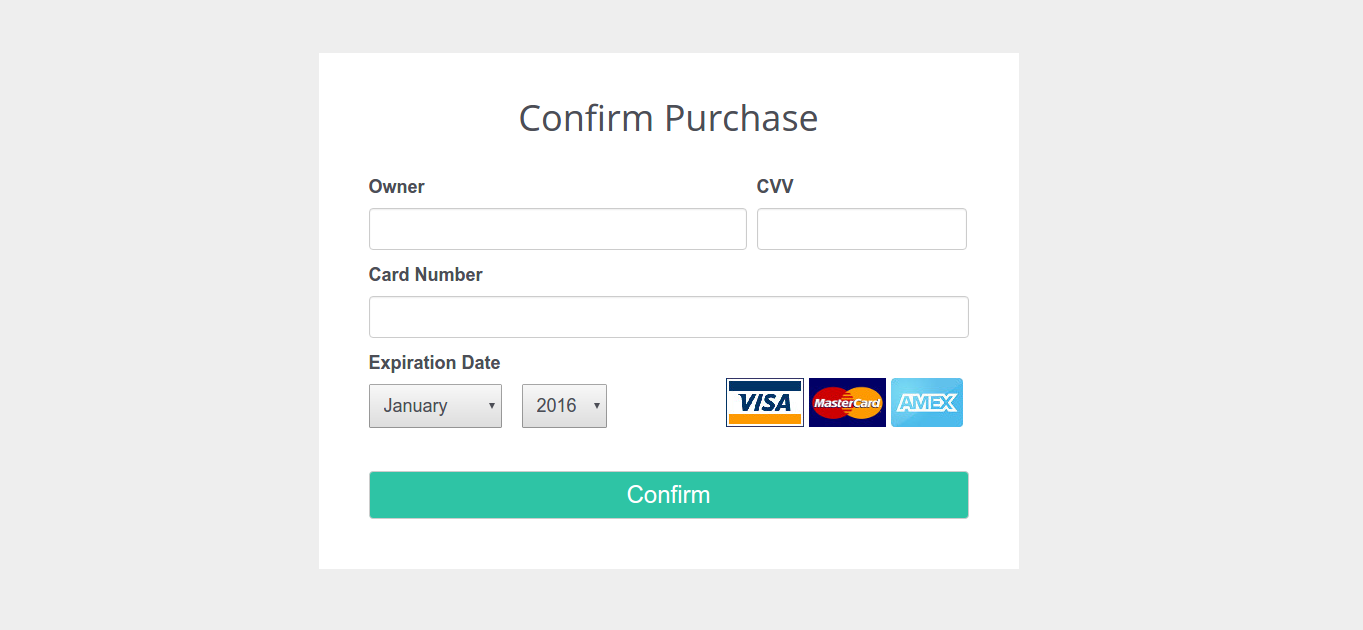

- #Download credit card validator with cvv pc install#
- #Download credit card validator with cvv pc software#
- #Download credit card validator with cvv pc code#
Not surprisingly, this has been very effective at reducing fraudulent activity.īut what about CNP (card-not-present) transactions, such as those taking place online or over the phone? Clearly a physical chip will not be helpful this is why there is a CVV printed on your card.
#Download credit card validator with cvv pc code#
This technology enables the internal code to change each time the card is read, a vast improvement on the magnetic strip. You may need a new card.īanks and merchants stepped up security for in-person transactions with the introduction of chip-based debit and credit cards. If there’s a charge you don’t recognize, contact your bank immediately. Check your account activity regularly. Review your transactions online or when the statement comes in the mail to ensure that you approved each one.If sensitive financial information needs to be transmitted in this way, it’s generally better if you’re the one to initiate the interaction. Ignore unsolicited requests for your personal information. If someone requests your credit card information by phone or email, ask why they need it.Don’t share photos of your credit card, either with friends or on social media. Someone could make unauthorized purchases using your card data.
#Download credit card validator with cvv pc software#
Use a VPN when browsing away from home. Although this might be overkill at home, when traveling or using public WiFi you should use VPN software to protect your personal information.Only enter your credit card information on trusted websites. Avoid websites without “https:” in the address the same goes for those that don’t show the SSL padlock in your browser window.If you don’t, anyone within range can connect, monitor your internet traffic and track any information you send. Password-protect your home’s WiFi network.

#Download credit card validator with cvv pc install#

Rather, banks generate them using four pieces of information: primary account number, four-digit expiration date, a pair of DES (Data Encryption Standard) keys and a three-digit service code. How Are CVVs Generated?Īs it turns out, CVVs are not random three- or four-digit numbers. Even if your credit card number is exactly the same, you will still have a different CVV. If you sign up for a new credit card or replace an existing one, you’ll end up with a new code the same applies if your current card expires and you receive a replacement. Does a New Card Have a New CVV?Īs a matter of security, generally, no two cards have the same CVV. In most cases you will be required to change it to a number you designate. While a bank may initially provide a PIN when your debit or credit card is issued, it’s only temporary. Neither of these PINs is the same as a CVV.ĬVVs are automatically generated by the credit card issuer and are printed on the card. Credit cards use PINs for cash advances, while debit cards use them for withdrawing cash or initiating a purchase. Is There a Difference Between a CVV and a PIN?Ī PIN is a user-created “personal identification number.” Most of the time a PIN is four digits, though some banks require longer numbers. American Express does things differently, placing a four-digit CVV on the front, above the Amex logo. Where Do I Find the CVV?įinding your CVV depends on the type of card you have. For Visa, Mastercard and Discover cards, you’ll find the three-digit code on the back, usually inside or just above the signature strip. So, while you may not like to enter the number for each online transaction, doing so is what provides that extra layer of security. According to PCI (Payment Card Industry) standards, merchants may store your credit card number and expiration date, but they cannot store your CVV. This is largely due to industry regulations. While it can be comparatively easy for skilled hackers to gain access to credit card numbers and expiration dates, CVVs are much more difficult to track down. This is the one you must input when making an online purchase. The first is encoded in the magnetic strip used for in-person transactions the second is visible on the card. There are two CVVs associated with most debit or credit cards. Enter the CVV, which banks and credit card issuers use to reduce fraudulent digital transactions. Creating fake cards has given way to online information theft. Since chip-enabled card technology has managed to sharply cut back on physical card fraud, criminals have shifted their focus to the digital realm.


 0 kommentar(er)
0 kommentar(er)
